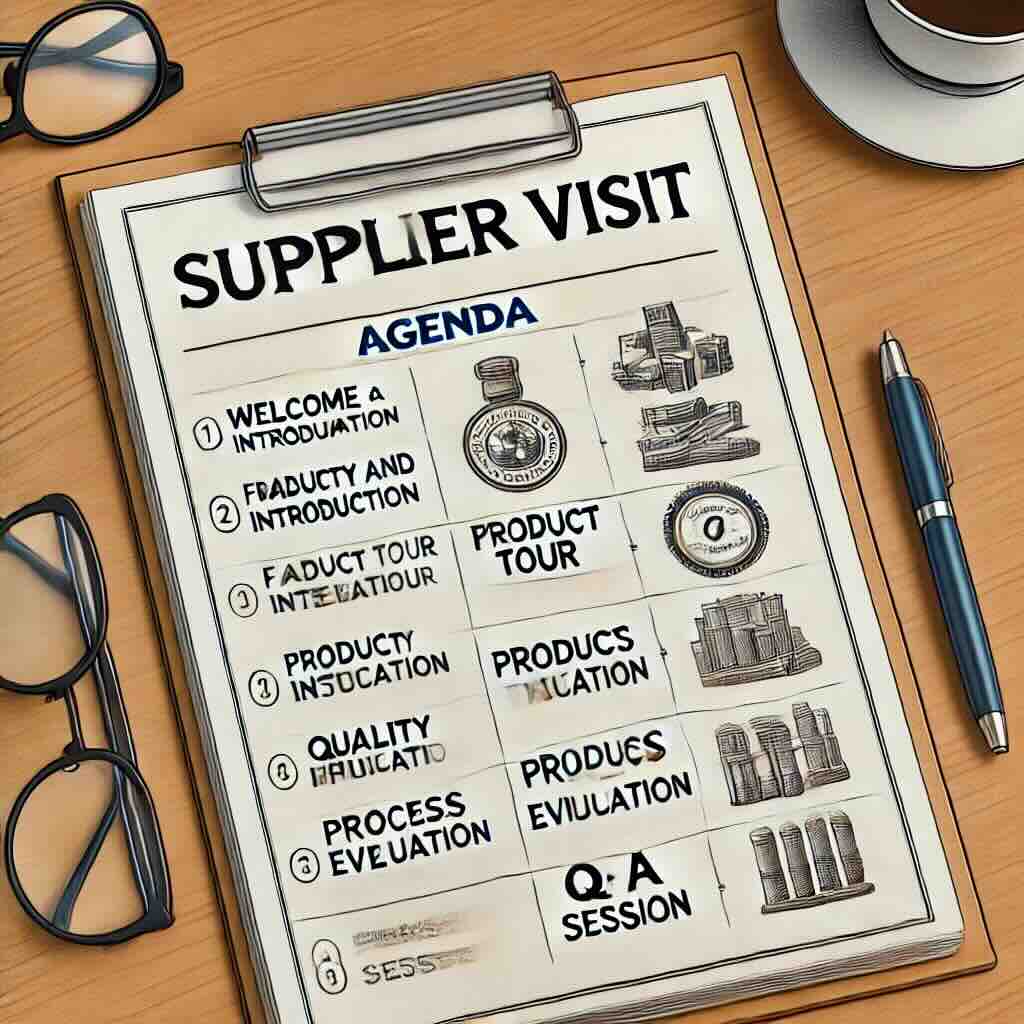If you are preparing a visit to a supplier, and the better prepared you are, the more likely you are to get the most out of your visit. In this blog post, we will discuss some tips to help preparation when visiting suppliers and how to make the most of your time with them.
Content…
Why visiting suppliers?
- Quality Assessment: On-site visits allow buyers to directly assess the quality of products and production processes.
- Relationship Building: Face-to-face interactions foster stronger relationships, leading to better collaboration and negotiation.
- Risk Management: Buyers can evaluate potential risks, including supply chain, environmental, and ethical risks.
- Process Understanding: Seeing the production process firsthand aids in understanding the complexities involved, potentially leading to more effective procurement strategies.
- Innovation and Improvement Opportunities: On-site visits can reveal opportunities for product or process improvements and innovations.
Supplier site visits are integral to informed decision-making, effective supplier management, and overall procurement success.
Preparation when visiting suppliers

- Set Objectives and Priorities: Before visiting your suppliers, it is important to establish your goals and priorities. Consider what you hope to accomplish during your visit, and make a list of the most important items that you want to discuss. This will help you stay focused during the visit and ensure that you cover all the important topics.
- Research the Supplier: Do some research on the supplier beforehand to learn more about their products, services, and reputation in the industry. This information will help you understand their strengths and weaknesses, and enable you to ask more informed questions during the visit. Also, review any previous contracts or agreements you have with the supplier to ensure that you understand the terms and obligations.
- Plan Your Itinerary: Create an itinerary for your visit to maximize your time with the supplier. Consider travel time, transportation, and any other factors that could affect your schedule. Schedule enough time to cover all of the important topics, but also allow for flexibility to adjust your plans as needed.
- Communicate Your Expectations: Clearly communicate your expectations to the supplier before your visit. Let them know what you hope to accomplish and what you need from them during the visit. Also, confirm any specific requirements such as dress code, presentation formats, and language preferences.
- Bring Relevant Materials: Bring any relevant materials with you to the supplier visit, such as product specifications, samples, or sales data. These materials will help you communicate your needs and preferences more effectively to the supplier, and make it easier for them to respond to your requests.
- Take Notes and Follow-Up: During your visit, take detailed notes of the discussions and outcomes, and clarify any follow-up action items. After the visit, send a follow-up email to the supplier summarizing the discussion and confirming any agreed-upon action items or next steps.
You may make the most of your time with a supplier by using these suggestions when preparing a visit to a supplier. To create solid supplier connections that will ultimately be advantageous to your company, keep in mind that preparation and communication are essential.
Learn more about visiting a supplier
If you want to learn more regarding details when preparing a visit to a supplier, we strongly recommend Dave Barr’s course Ensuring Effective Supplier Meetings. During the course you will understand the necessary homework you should undertake prior to leaving the office and learn the benefits of a structured and repeatable process when visiting suppliers.
“The Real Life Buyer” is a platform led by David Barr, a seasoned purchasing professional with over 20 years of experience. It offers a podcast series featuring interviews with experts in various business fields. The topics covered are extensive, ranging from self-development, business preparedness, purchasing know-how, to strategic thinking and espionage protection. The podcast aims to provide listeners with insights and knowledge to enhance their business and personal skills. It serves as a valuable resource for those seeking to improve their leadership, high-performance habits, emotional intelligence, and gain a deeper understanding of purchasing, supply chain, and logistics. For more information about Dave Barr, visit The Real Life Buyer.
Alternatives – Supplier self-assessment and VR/AR.
Supplier self-assessment is a process where suppliers evaluate their own operations, practices, and performance based on predetermined criteria set by the buying organization. This assessment typically includes aspects such as quality management, production capabilities, ethical practices, environmental compliance, and financial stability. The aim is to identify areas for improvement, ensure alignment with the buyer’s standards, and maintain transparency in the supply chain. This proactive approach helps in enhancing supplier performance and mitigating risks, fostering a more efficient and responsible supply chain. Supplier self-assessment and supplier visits are both important in procurement, but they serve different purposes:
Supplier Self-Assessment:
- Conducted by the suppliers themselves.
- Focuses on internal evaluation against predefined criteria.
- Helps identify areas for improvement and ensures compliance with buyer’s standards.
- Less resource-intensive for the buyer.
Supplier Visits:
- Conducted by the buyer or their representatives.
- Involves direct observation and evaluation of the supplier’s operations.
- Builds stronger relationships and provides firsthand insight into supplier capabilities.
- More effective for detailed assessment and risk management.
While self-assessments offer an initial overview and compliance check, supplier visits provide deeper insights and strengthen partnerships.
Self assessment, as alternative to visiting suppliers, can be used as part of Supplier Onboarding and Know Your Supplier processes. Follow links to courses for more information.
An example of Supplier Collaboration platform is Jacomo.
In the blogpost about using VR/AR when conducting a FAT, you can read more about alternatives to visiting a supplier site.
Note: Illustration to the blogpost “Visiting suppliers – why and are there alternatives” was created by ChatGPT on September 14, 2024.
